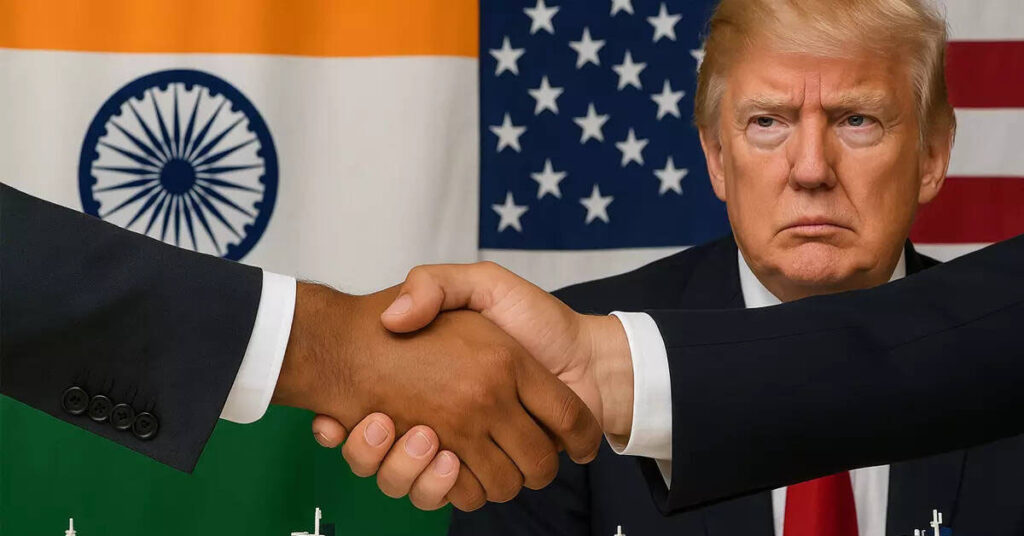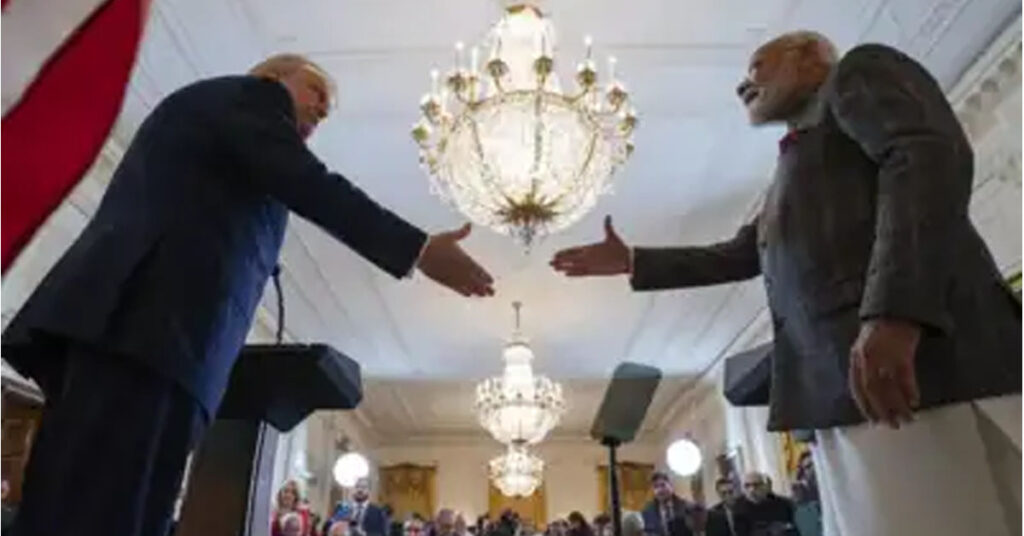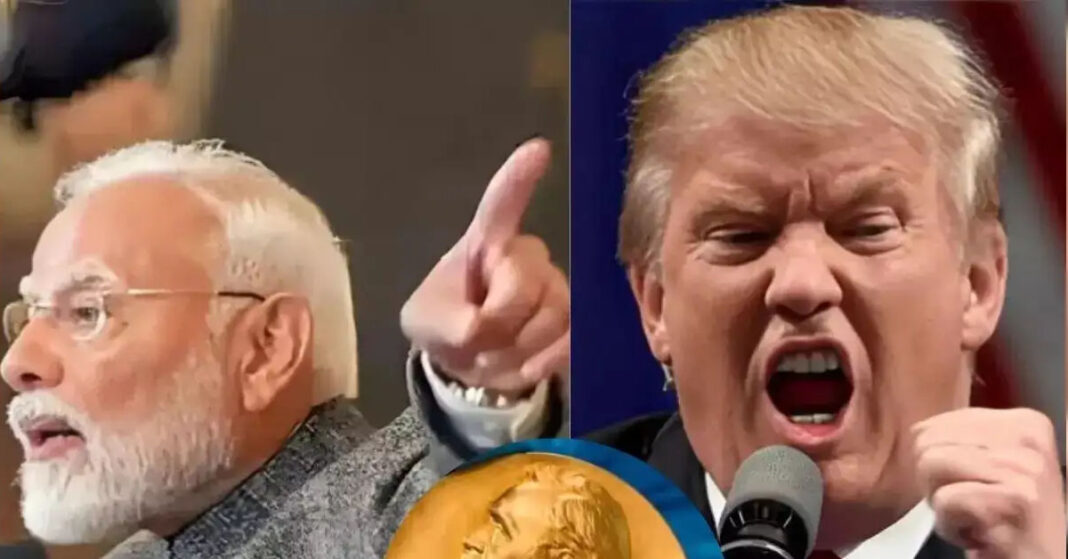New Delhi, August 30, 2025 — A report by The New York Times has claimed that the underlying reason for the latest rift between India and the United States is not just trade or geopolitics, but former U.S. President Donald Trump’s personal desire to secure a Nobel Peace Prize. The report suggests that Trump linked the India–Pakistan ceasefire to his own international recognition and pressured Prime Minister Narendra Modi to support his Nobel nomination.
Table of Contents
Trump Pushed Modi for Nobel Prize Backing
According to the report, Trump spoke with Prime Minister Modi on June 17, telling him how proud he was of brokering a ceasefire between India and Pakistan. During the call, Trump allegedly mentioned that Pakistan was considering nominating him for the Nobel Peace Prize and hinted that India should follow suit.

The report states that Modi rejected the suggestion, firmly telling Trump that the ceasefire had been a direct outcome of India–Pakistan talks and that the U.S. had no role in the process. Trump reportedly ignored Modi’s objection, escalating tension between the two leaders. Since that phone call, the report notes, there has been no direct communication between Modi and Trump.
A Growing Rift Between Washington and New Delhi
The New York Times report is based on conversations with more than a dozen officials in Washington and New Delhi. Most of them spoke on condition of anonymity but agreed that Trump’s policies were steadily weakening India–U.S. relations.
While India continues to adopt economic measures to stabilize its markets, its largest trade partner—the United States—appears increasingly hostile. Trump’s administration has imposed a 50% tariff on Indian exports, the highest against any country, signaling a sharp deterioration in bilateral ties.
Trump Skips Quad Summit, Relations Hit Low Point
Sources also revealed that Trump was initially expected to attend the upcoming Quad Summit in India later this year. However, those plans have now been dropped, underscoring the strain in the relationship.

The situation has even spilled into public sentiment in India. Last week, during a festival in Maharashtra, a giant effigy of Trump was paraded with the label “backstabber.” Indian officials have also described Washington’s aggressive measures as nothing less than “bullying.”
From ‘Howdy Modi’ to Diplomatic Tensions
The latest rift stands in stark contrast to the warm friendship that Modi and Trump once projected to the world. In 2019, Trump attended the historic “Howdy, Modi!” rally in Texas, where over 50,000 Indian Americans welcomed Modi. Just months later, Modi returned the gesture with the “Namaste Trump!” event in Ahmedabad, Gujarat, where Trump received a lavish reception with music, dance, and cheering crowds.

At that time, many Indians believed Trump’s emphasis on personal diplomacy would work in India’s favour. Modi even referred to Trump as a “true friend.” But today, that image has all but collapsed.
Trump’s Strategy: Weakening Modi’s Political Strength?
The New York Times report suggests that Trump’s insistence on being credited for the ceasefire may have been part of a broader strategy to weaken Modi’s domestic political image. Modi’s reputation as a strong leader rests heavily on his tough stance toward Pakistan.
If the ceasefire were seen as an outcome of U.S. pressure, it could damage Modi politically, portraying him as having yielded to external influence. That, in turn, would diminish his global credibility and make him appear weaker on the international stage.
Why Modi Refused to Acknowledge U.S. Role
Analysts note that Modi’s refusal to recognize U.S. involvement was a deliberate move to protect his strongman image. Acknowledging Trump’s role would not only undermine his political standing but also kill any possibility of India ever nominating Trump for the Nobel Prize.
Meanwhile, Pakistan reportedly nominated Trump in haste, projecting him as a peacemaker. India, however, flatly rejected the narrative, maintaining that the ceasefire was a bilateral achievement.
Tariffs as Retaliation Against India
The report also highlights that India is now one of the few countries, along with Brazil, whose leaders have openly pushed back against Trump. In retaliation, Trump imposed steep tariffs on Indian goods—up to 50%—higher than on any other country.
This move has not only strained trade ties but also affected India’s economy, which counts the U.S. as its largest export destination. Indian officials describe the tariffs as politically motivated punishment for Modi’s refusal to endorse Trump’s Nobel ambitions.
What Lies Ahead for India–U.S. Relations
The strained relationship raises questions about the future of India–U.S. strategic cooperation, especially at a time when both countries face challenges from China’s growing influence. The absence of U.S. participation in the Quad Summit could further weaken regional security efforts.
Experts believe that unless political egos are set aside, the diplomatic fallout could have long-term consequences. “The U.S. has historically played a role in easing India–Pakistan tensions, but this time, Modi refused to grant Trump any credit. That decision has reshaped the dynamics of bilateral relations,” one analyst told the newspaper.
Conclusion
The New York Times report paints a picture of personal ambition interfering with global diplomacy. Trump’s pursuit of the Nobel Peace Prize and his expectation that India would support him appear to have triggered a significant diplomatic rift, leading to steep tariffs and political tension.
From the celebratory scenes of “Howdy Modi” and “Namaste Trump” to today’s confrontational rhetoric, India–U.S. relations have travelled a long and turbulent road. Whether both nations can rebuild trust will depend on future leadership and the ability to look beyond personal rivalries toward shared strategic goals.










